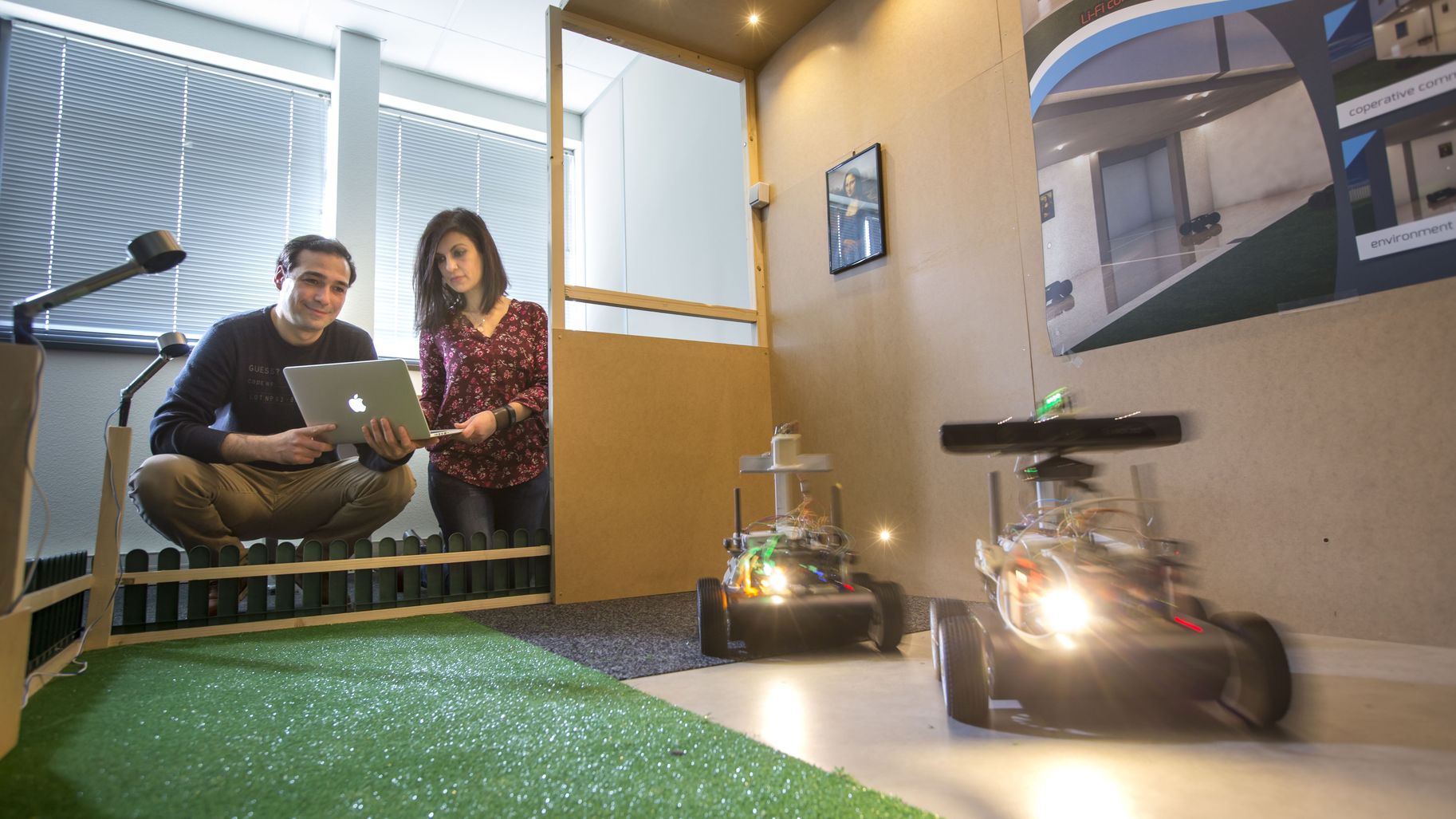Discover more
- Page web de l'équipe-projet FUN
- Twitter FUN @FUNTeam2
- Site web de Valeria Loscri

Upon arriving at the Lille Inria Centre four and a half years ago, she joined the Fun project team, whose mission is to develop alternatives to the existing communication methods in the field of wireless networks. “The overall goal is to be able to make different types of systems cooperate in an autonomous way while minimizing human intervention as much as possible”. In the field of networks and telecommunications, the use of light, called Visible Light Communication (VLC ), diffused by an LED for example, opens up new opportunities.
With this technology, light replaces the electromagnetic waves emitted, for example by traditional Wi-Fi networks. It is thus referred to as Li-Fi. “This technology uses existing light sources, so there is no additional consumption. One of the advantages of this technology is its green aspect ”, says Valéria. The properties of VLC also mean it can be used even in a number of situations where electromagnetic signals may lead to adverse consequences. It can ensure high-throughput data links without the risk of interference for most of the devices in its environment. This sort of communication is therefore safe to use in highly-sensitive environments such as hospitals and airplanes. “We can also develop underwater applications. Light could be a solution to suit this type of situation ”, adds Valéria Loscri.
But even in more traditional business settings, VLC technology could offer new possibilities. Information could be transmitted using light in coexistence with more traditional office Wi-Fi networks. Using a combination of both technologies could therefore improve network performance while reducing energy consumption. Researchers are already envisioning a myriad of other applications for VLC technology for the general public, for example in high-traffic places like shops. “We’re working on indoor geolocation systems. VLC technology makes it possible to use the light sources within a shop to determine a customer’s exact location, and send him information on his smartphone based on his position ”. But using light as a channel for transmitting information poses new challenges for the Fun team, particularly in terms of responding to the problem of interference. “In communication with an LED lamp, we have to try to develop artificial intelligence algorithms to make the systems autonomously adapt to interference and changes in the environment ”, says the researcher.